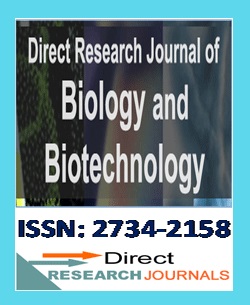Microbial and Molecular Evaluation of Honey from Northern and Southern Guinea Savanah Zones of Niger State, Nigeria
Keywords:
Guinea Savanah, Honey, Microbial, Niger StateAbstract
Honey is a natural sweet substance produced by honey bees, from nectar of plant flowers and honey dew. It has low water activity because of the great amount of sugar and antimicrobial compounds derived from the nectar of flowers. Despite all the honey antimicrobial properties, some species of microorganisms can survive and cause damage to honeybees or consumers. The study was aimed at evaluating the microbial content of honey from the Northern and Southern Guinea Savannah Zones of Niger State, Nigeria. The honey samples were collected from the two ecological zones based on purposive sampling. This study evaluated the quality of honey in terms of its microbial content. The total bacterial counts (TBC) in the Northern Guinea Savannah ranged from 4.03×10⁻³ to 4.65×10⁻³ cfu, while the Southern Guinea Savannah had a TBC range of 3.50×10⁻³ to 4.80×10⁻³ cfu. The isolated micro-organisms were Bacillus species and Staphylococcus species. Based on the parameters investigated, the quality of honey was good, falling within international recognized standard. Microbial counts in all samples were within the FDA-accepted limit of less than 15,000 CFU per gram, indicating low levels of contamination. The isolated bacteria, primarily from the genera Bacillus and Staphylococcus, were likely introduced through environmental factors or handling practices rather than being native to the honey. The absence of coliforms (TC) supports honey’s natural antimicrobial properties. Phylogenetic analysis revealed genetic variation among the isolated species, showing evolutionary relationships and clustering into distinct groups. The findings reaffirm honey's antimicrobial qualities, while emphasizing the importance of proper handling to prevent contamination. Overall, the low microbial presence in the honey samples ensures their safety and marketability.







